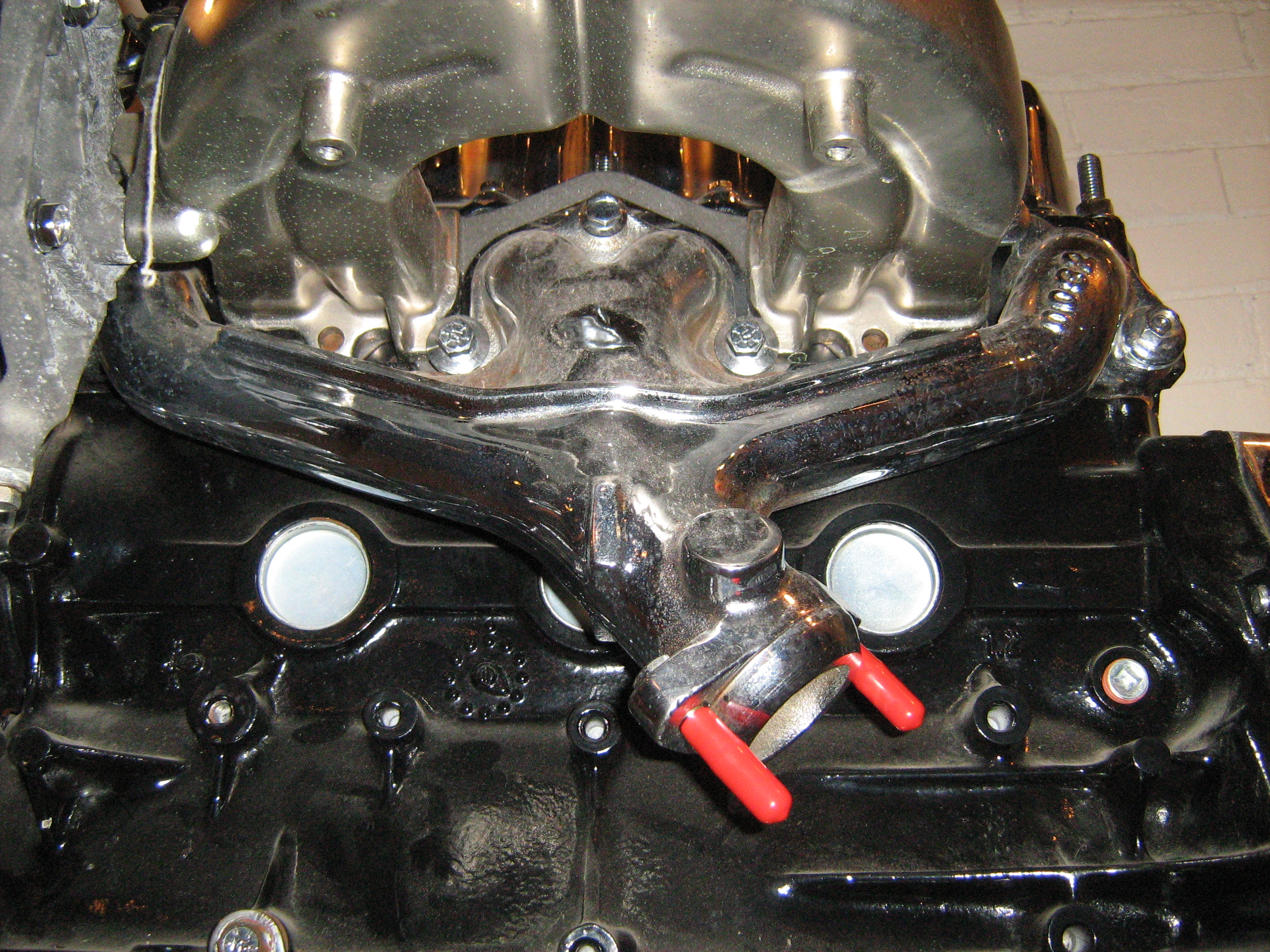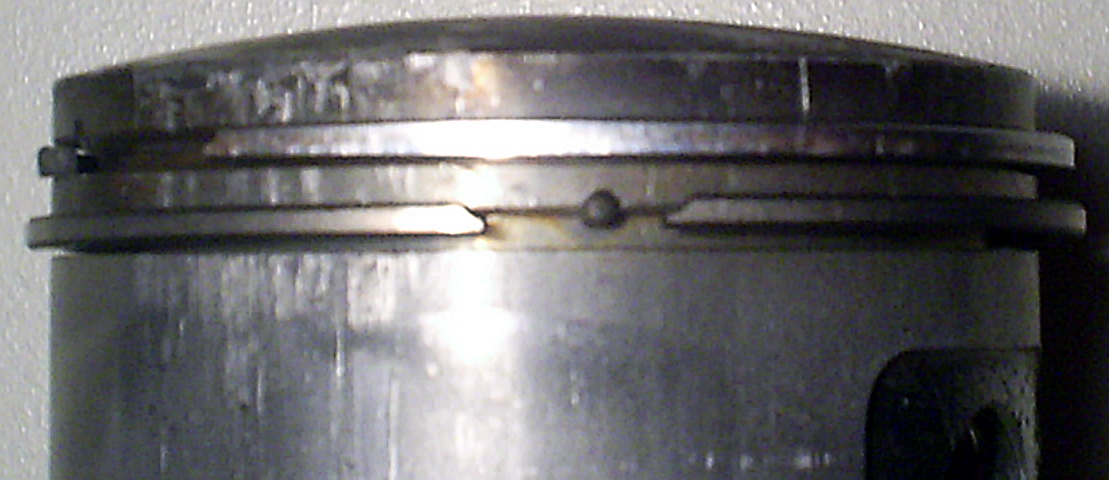|
Wet Stacking
Wet stacking is a condition in diesel engines in which unburned fuel passes on into the exhaust system. The word "stacking" comes from the term "stack" for exhaust pipe or chimney stack. The oily exhaust pipe is therefore a "wet stack". This condition can have several causes. The most common cause is idling the engine for long intervals, which does not generate enough heat in the cylinder for a complete burn. "Idling" may be running at full rated operating speed, but with very little load applied. Another is excessive fueling. That may be caused by weak or leaky injectors, fuel settings turned up too high or over fueling for the given rpms. Cold weather running or other causes that prevent the engine from reaching proper operating temperature can cause a buildup of fuel due to incomplete burn that can result in 'wet stacking'. In diesel generators, it is usually because the diesel engine is running at only a small percentage of its rated output. For efficient combustion, a diesel ... [...More Info...] [...Related Items...] OR: [Wikipedia] [Google] [Baidu] |
Diesel Engine
The diesel engine, named after Rudolf Diesel, is an internal combustion engine in which ignition of the fuel is caused by the elevated temperature of the air in the cylinder due to mechanical compression; thus, the diesel engine is a so-called compression-ignition engine (CI engine). This contrasts with engines using spark plug-ignition of the air-fuel mixture, such as a petrol engine (gasoline engine) or a gas engine (using a gaseous fuel like natural gas or liquefied petroleum gas). Diesel engines work by compressing only air, or air plus residual combustion gases from the exhaust (known as exhaust gas recirculation (EGR)). Air is inducted into the chamber during the intake stroke, and compressed during the compression stroke. This increases the air temperature inside the cylinder to such a high degree that atomised diesel fuel injected into the combustion chamber ignites. With the fuel being injected into the air just before combustion, the dispersion of the fuel is une ... [...More Info...] [...Related Items...] OR: [Wikipedia] [Google] [Baidu] |
Exhaust System
An exhaust system is used to guide reaction exhaust gases away from a controlled combustion inside an engine or stove. The entire system conveys burnt gases from the engine and includes one or more exhaust pipes. Depending on the overall system design, the exhaust gas may flow through one or more of: *Cylinder head and exhaust manifold *A turbocharger to increase engine power. *A catalytic converter to reduce air pollution. *A muffler (North America) / silencer (UK/India), to reduce noise. Design criteria An exhaust pipe must be carefully designed to carry toxic and/or noxious gases away from the users of the machine. Indoor generators and furnaces can quickly fill an enclosed space with poisonous exhaust gases such as hydrocarbons, carbon monoxide and nitrogen oxides, if they are not properly vented to the outdoors. Also, the gases from most types of machines are very hot; the pipe must be heat-resistant, and it must not pass through or near anything that can burn or can b ... [...More Info...] [...Related Items...] OR: [Wikipedia] [Google] [Baidu] |
Exhaust Pipe
An exhaust system is used to guide reaction exhaust gases away from a controlled combustion inside an engine or stove. The entire system conveys burnt gases from the engine and includes one or more exhaust pipes. Depending on the overall system design, the exhaust gas may flow through one or more of: *Cylinder head and exhaust manifold *A turbocharger to increase engine power. *A catalytic converter to reduce air pollution. *A muffler (North America) / silencer (UK/India), to reduce noise. Design criteria An exhaust pipe must be carefully designed to carry toxic and/or noxious gases away from the users of the machine. Indoor generators and furnaces can quickly fill an enclosed space with poisonous exhaust gases such as hydrocarbons, carbon monoxide and nitrogen oxides, if they are not properly vented to the outdoors. Also, the gases from most types of machines are very hot; the pipe must be heat-resistant, and it must not pass through or near anything that can burn or can ... [...More Info...] [...Related Items...] OR: [Wikipedia] [Google] [Baidu] |
Chimney Stack
A chimney is an architectural ventilation structure made of masonry, clay or metal that isolates hot toxic exhaust gases or smoke produced by a boiler, stove, furnace, incinerator, or fireplace from human living areas. Chimneys are typically vertical, or as near as possible to vertical, to ensure that the gases flow smoothly, drawing air into the combustion in what is known as the stack, or chimney effect. The space inside a chimney is called the ''flue''. Chimneys are adjacent to large industrial refineries, fossil fuel combustion facilities or part of buildings, steam locomotives and ships. In the United States, the term ''smokestack industry'' refers to the environmental impacts of burning fossil fuels by industrial society, including the electric industry during its earliest history. The term ''smokestack'' (colloquially, ''stack'') is also used when referring to locomotive chimneys or ship chimneys, and the term ''funnel'' can also be used. The height of a ch ... [...More Info...] [...Related Items...] OR: [Wikipedia] [Google] [Baidu] |
Diesel Generator
A diesel generator (DG) (also known as a diesel Genset) is the combination of a diesel engine with an electric generator (often an alternator) to generate electrical energy. This is a specific case of engine generator. A diesel compression-ignition engine is usually designed to run on diesel fuel, but some types are adapted for other liquid fuels or natural gas. Diesel generating sets are used in places without connection to a power grid, or as an emergency power supply if the grid fails, as well as for more complex applications such as peak-lopping, grid support, and export to the power grid. Diesel generator size is crucial to minimize low load or power shortages. Sizing is complicated by the characteristics of modern electronics, specifically non-linear loads. In size ranges around 50 MW and above, an open cycle gas turbine is more efficient at full load than an array of diesel engines, and far more compact, with comparable capital costs; but for regular part-loading, ... [...More Info...] [...Related Items...] OR: [Wikipedia] [Google] [Baidu] |
Crankcase Dilution
Crankcase dilution is a phenomenon of internal combustion engines in which unburned diesel or gasoline accumulates in the crankcase. Excessively rich fuel mixture or incomplete combustion allows a certain amount of fuel to pass down between the pistons and cylinder walls and dilute the engine oil. It is more common in situations where fuel is injected at a very high pressure, such as in a direct-injected diesel engine. When a mixture of air and fuel enters the cylinder of an engine, it is entirely possible for condensation of fuel to occur on the cooler parts of the cylinders. The condensate may wash the lubricating oil from the cylinder walls, travel past the piston rings and collect in the oil pan, thus increasing wear and also diluting the lubricating oil. Since the less volatile components of the fuel will have the greatest tendency to condense, the degree of crankcase-oil dilution is directly related to the end volatility temperatures of the mixture. Causes Crankcase di ... [...More Info...] [...Related Items...] OR: [Wikipedia] [Google] [Baidu] |
Rolling Coal
Rolling coal is the practice of modifying a diesel engine to emit large amounts of black or grey sooty exhaust fumes—diesel fuel that has not undergone complete combustion. It is a predominantly North American phenomenon (more specifically in the United States and Canada), despite being illegal. Rolling coal is sometimes used as a form of anti-environmentalism. Such modifications may include the intentional removal of the particulate filter. Practitioners often additionally modify their vehicles by installing smoke switches, large exhausts, and smoke stacks. Modifications to a vehicle to enable rolling coal may cost from US$200 to US$5,000. Background Rolling coal is a form of conspicuous air pollution, used for entertainment or as protest. Some drivers intentionally trigger coal rolling in the presence of hybrid vehicles (a practice nicknamed "Prius repellent") to cause their drivers to lose sight of the road and inhale harmful air pollution. Coal rolling may also be directed ... [...More Info...] [...Related Items...] OR: [Wikipedia] [Google] [Baidu] |
Engine Problems
An engine or motor is a machine designed to convert one or more forms of energy into mechanical energy. Available energy sources include potential energy (e.g. energy of the Earth's gravitational field as exploited in hydroelectric power generation), heat energy (e.g. geothermal), chemical energy, electric potential and nuclear energy (from nuclear fission or nuclear fusion). Many of these processes generate heat as an intermediate energy form, so heat engines have special importance. Some natural processes, such as atmospheric convection cells convert environmental heat into motion (e.g. in the form of rising air currents). Mechanical energy is of particular importance in transportation, but also plays a role in many industrial processes such as cutting, grinding, crushing, and mixing. Mechanical heat engines convert heat into work via various thermodynamic processes. The internal combustion engine is perhaps the most common example of a mechanical heat engine, in whi ... [...More Info...] [...Related Items...] OR: [Wikipedia] [Google] [Baidu] |




_Generator_Set.jpg)


